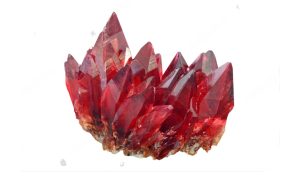The Byzantine Empire, which flourished from the 4th to the 15th century, left an indelible mark on the world through its art, architecture, and culture. One of its most exquisite contributions is the creation of religious art jewelry, particularly the Holyart intricate and spiritually profound holy icons. These miniature works of art not only reflect the devotion and craftsmanship of their creators but also encapsulate the theological and aesthetic principles of Byzantine spirituality.
The Significance of Byzantine Icons
Byzantine icons are much more than mere decorative pieces; they are sacred objects believed to provide a direct link to the divine. Icons played a crucial role in the religious life of Byzantium, serving as mediums for veneration and conduits for prayer. Crafted with a deep sense of devotion, these icons were not just created but ‘written,’ a term that underscores their spiritual significance and the belief that they convey divine presence.
The production of icons was governed by strict guidelines to ensure theological accuracy and consistency. Artists adhered to established conventions, which included the use of specific colors, forms, and symbols. Gold leaf, a hallmark of Byzantine art, was extensively used to symbolize the divine light of heaven, giving the icons their distinctive radiant quality.
Artistic Techniques and Materials
The creation of Byzantine religious art jewelry involved a meticulous and labor-intensive process. Artisans utilized a variety of materials, including gold, silver, precious stones, and enamel. The techniques employed were sophisticated and required a high degree of skill.
Enameling,
for example, was a popular technique. Byzantine artisans developed the cloisonné method, where compartments or cloisons were created using fine gold or silver wires, which were then filled with vibrant enamel pastes. This method allowed for the creation of intricate designs and vivid color contrasts that remain vibrant even after centuries.
Gemstones
were another essential component, not just for their beauty but also for their symbolic meanings. Rubies, emeralds, sapphires, and pearls were commonly used. Each stone was believed to have specific spiritual or protective properties. The careful selection and placement of these stones in the icons were intended to enhance the spiritual efficacy of the piece.
Goldsmithing
was perhaps the most critical skill in the creation of these holy icons. Gold, symbolizing eternal light and the divine nature of Christ, was used extensively. Artisans employed techniques such as filigree, granulation, and repoussé to create detailed and delicate designs. The use of gold also ensured the durability and longevity of these sacred objects.
Symbolism in Byzantine Religious Jewelry
The symbolism embedded in Byzantine religious art jewelry is profound and multi-layered. Each element, from the choice of colors to the arrangement of figures, carried specific theological meanings.
Color
played a vital role. Gold, as mentioned, symbolizes divine light. Blue represented the heavens and the divine wisdom, while red symbolized the passion of Christ and martyrdom. White was associated with purity and holiness, and green with eternal life and renewal.
Figures and scenes
depicted in the icons were also rich in symbolism. Common subjects included Christ Pantocrator (Christ the Almighty), the Virgin Mary (Theotokos), and various saints and angels. These figures were portrayed with specific attributes, such as hand gestures and objects, which identified them and conveyed their roles in the divine order. The arrangement of figures often followed a hierarchical structure, emphasizing the centrality of Christ and the Virgin Mary in the Christian faith.
Inscriptions
were another significant element. Written in Greek or Latin, these inscriptions often included prayers, names of the depicted saints, or biblical passages. They served to reinforce the spiritual message of the icon and to aid in the devotion of the faithful.
The Legacy and Influence
The influence of Byzantine religious art jewelry extended far beyond the borders of the Byzantine Empire. Through trade, diplomacy, and conquest, these sacred objects found their way into various parts of Europe, the Middle East, and even Asia. They inspired local artisans and contributed to the development of regional artistic traditions.
In Western Europe, for instance, Byzantine icons influenced the Romanesque and Gothic styles, particularly in the use of enameling and the depiction of religious figures. The impact of Byzantine art is also evident in the Orthodox Christian world, where the tradition of iconography continues to thrive.
Modern Appreciation and Revival
Today, Byzantine religious art jewelry is highly valued by collectors, historians, and art enthusiasts. Museums and private collections worldwide treasure these pieces for their historical significance, artistic merit, and spiritual depth. Contemporary jewelers and artists also draw inspiration from Byzantine techniques and aesthetics, creating works that pay homage to this rich artistic tradition.
In conclusion, the beauty of Byzantine religious art jewelry lies not only in its exquisite craftsmanship but also in its profound spiritual symbolism. These holy icons are timeless reminders of a civilization that sought to bridge the earthly and the divine through art. They continue to captivate and inspire, bearing witness to the enduring legacy of Byzantine culture.





